| Article ID | Journal | Published Year | Pages | File Type |
|---|---|---|---|---|
| 1739920 | Nuclear Engineering and Technology | 2013 | 8 Pages |
The sequential separation process, composed of an oxygen sparging process for separating lanthanides and a zone freezing process for separating Group I and II fission products, was evaluated and tested with a surrogate eutectic waste salt generated from pyroprocessing of used metal nuclear fuel. During the oxygen sparging process, the used lanthanide chlorides (Y, Ce, Pr and Nd) were converted into their sat-insoluble precipitates, over 99.5% at 800 °C; however, Group I (Cs) and II (Sr) chlorides were not converted but remained within the eutectic salt bed. In the next process, zone freezing, both precipitation of lanthanide precipitates and concentration of Group I/II elements were preformed. The separation efficiency of Cs and Sr increased with a decrease in the crucible moving speed, and there was little effect of crucible moving speed on the separation efficiency of Cs and Sr in the range of a 3.7 – 4.8 mm/hr. When assuming a 60% eutectic salt reuse rate, over 90% separation efficiency of Cs and Sr is possible, but when increasing the eutectic salt reuse rate to 80%, a separation efficiency of about 82 – 86 % for Cs and Sr was estimated.
